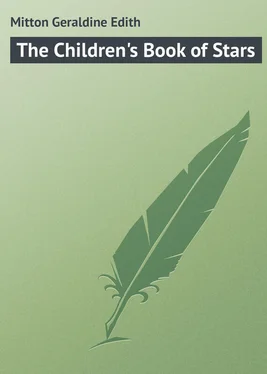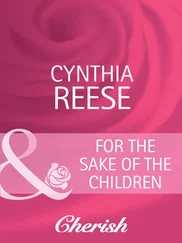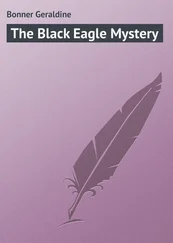Geraldine Mitton - The Children's Book of Stars
Здесь есть возможность читать онлайн «Geraldine Mitton - The Children's Book of Stars» — ознакомительный отрывок электронной книги совершенно бесплатно, а после прочтения отрывка купить полную версию. В некоторых случаях можно слушать аудио, скачать через торрент в формате fb2 и присутствует краткое содержание. Издательство: Иностранный паблик, Жанр: foreign_prose, foreign_children, foreign_language, на английском языке. Описание произведения, (предисловие) а так же отзывы посетителей доступны на портале библиотеки ЛибКат.
- Название:The Children's Book of Stars
- Автор:
- Издательство:Иностранный паблик
- Жанр:
- Год:неизвестен
- ISBN:нет данных
- Рейтинг книги:5 / 5. Голосов: 1
-
Избранное:Добавить в избранное
- Отзывы:
-
Ваша оценка:
- 100
- 1
- 2
- 3
- 4
- 5
The Children's Book of Stars: краткое содержание, описание и аннотация
Предлагаем к чтению аннотацию, описание, краткое содержание или предисловие (зависит от того, что написал сам автор книги «The Children's Book of Stars»). Если вы не нашли необходимую информацию о книге — напишите в комментариях, мы постараемся отыскать её.
The Children's Book of Stars — читать онлайн ознакомительный отрывок
Ниже представлен текст книги, разбитый по страницам. Система сохранения места последней прочитанной страницы, позволяет с удобством читать онлайн бесплатно книгу «The Children's Book of Stars», без необходимости каждый раз заново искать на чём Вы остановились. Поставьте закладку, и сможете в любой момент перейти на страницу, на которой закончили чтение.
Интервал:
Закладка:
Now, before there were any planets at all or any sun, in the place of our solar system was a vast gaseous cloud called a nebula, which slowly rotated, and this rotation was the first impulse or force which God gave it. It was not at all dense, and as it rotated a part broke off, and inheriting the first impulse, went on rotating too. The impulse would have sent it off in a straight line, but the pull of gravity from the nebula held it in place, and it circled round; then the nebula, as it rotated, contracted a little, and occupied less space and grew denser, and presently a second piece was thrown off, to become in time another planet. The same process was repeated with Saturn, and then with the huge Jupiter. The nebula was always rotating and always contracting. And as it behaved, so did the planets in their turn; they spun round and cooled and contracted, and the moons were flung off from them, just as they – the planets – had been flung off from the parent nebula.
Now, after the original nebula had parted with the mighty mass of Jupiter, it never again made an effort so great, and for a long time the fragments that were detached were so small as hardly to be worth calling planets; they were the asteroids, little lumps and fragments that the nebula left behind. But as it still contracted in time there came Mars; and having recovered a little, the nebula with more energy got rid of the earth, and next Venus, and lastly little Mercury, the smallest of the eight planets. Then it contracted further, and perhaps you can guess what the remainder of it is – the sun; and by spinning in a plastic state the sun, like the earth, has become a globe, round and comparatively smooth; and its density is now too great to allow of its losing any more fragments, so, as far as we can see, the solar system is complete.
This theory of the origin of the planets is called the nebula theory. We cannot prove it, but there are so many facts that can only be explained by it, we have strong reason for believing that something of the kind must have happened. When we come to speak of the starry heavens we shall see that there are many masses of glowing gas which are nebulæ of the same sort, and which form an object-lesson in our own history.
We have spoken rather lightly of the nebula rotating and throwing off planets; but we must not think of all this as having happened in a short time. It is almost as impossible for the human mind to conceive the ages required for such slow changes as to grasp the great gulfs of space that separate us from the stars. We can only do it by comparison. You know what a second is, and how the seconds race past without ceasing day and night. It makes one giddy to picture the seconds there are in a year; yet if each one of those seconds was a year in itself, what then? That seems a stupendous time, but it is nothing compared with the time needed to form a nebula into a planetary system. If we had five thousand of such years, with every second in them a year, we should then only have counted one billion real years, and billions must have passed since the sun was a gaseous nebula filling the outermost bounds of our system!
CHAPTER V
FOUR SMALL WORLDS
What must the sun appear to Mercury, who is so much nearer to him than we are? To understand that we should have to imagine our sun increased to eight or nine times his apparent size, and pouring out far greater heat and light than anything that we have here, even in the tropics. It was at first supposed that Mercury must have an extra thick covering of clouds to protect him from this tremendous glare; but recent observations tend to prove that, far from this, he is singularly free from cloud. As this is so, no life as we know it could possibly exist on Mercury.
His year – the time he takes to go round the sun and come back to the same place again – is eighty-eight days, or about one-quarter of ours. As his orbit is much more like an ellipse than a circle, it follows that he is much nearer to the sun at one time than at another – in fact, when he is nearest, the size of the sun must seem three and a half times greater than when he is furthest away from it! Even at the best Mercury is very difficult to observe, and what we can learn about him is not much; but, as we have heard, his axis is supposed to be upright. If so his seasons cannot depend on the bend toward or away from the sun, but must be influenced solely by the changes in his distance from the sun, which are much greater than in our own ease. There is some reason to believe, too, that Mercury's day and year are the same length. This means that as the planet circles round the sun he turns once. If this is so the sun will shine on one half of the planet, producing an accumulated heat terrific to think of; while the other side is plunged in blackness. The side which faces the sun must be heated to a pitch inconceivable to us during the nearer half of the orbit – a pitch at which every substance must be at boiling-point, and which no life as we know it could possibly endure. Seen from our point of view, Mercury goes through all the phases of the moon, as he shines by the reflected light of the sun; but this point we shall consider more particularly in regard to Venus, as Venus is nearer to us and easier to study. For a long time astronomers had a fancy that there might be another planet even nearer to the sun than Mercury, perhaps hidden from us by the great glare of the sun. They even named this imaginary planet Vulcan, and some thought they had seen it, but it is tolerably certain that Vulcan existed only in imagination. Mercury is the nearest planet to the sun, and also the smallest, of course excepting the asteroids. It is about three thousand miles in diameter, and as our moon is two thousand miles, it is not so much bigger than that. So far as we are concerned, it is improbable we shall ever know very much more about this little planet.
But next we come to Venus, our beautiful bright neighbour, who approaches nearer to us than any other heavenly body except the moon. Alas! when she is nearest, she like Mercury, turns her dark side toward us, coming in between us and the sun, so that we cannot observe her at all.
Everyone must have noticed Venus, however carelessly they have looked at the sky; but it is likely that far more people have seen her as an evening than a morning star, for most people are in bed when the sun rises, and it is only before sunrise or after sunset we can see Venus well. She is at her best from our point of view when she seems to us to be furthest from the sun, for then we can study her best, and at these times she appears like a half or three-quarter moon, as we only see a part of the side from which the sunlight is reflected. She shines like a little silver lamp, excelling every other planet, even Jupiter, the largest of all. If we look at her even with the naked eye, we can see that she is elongated or drawn out, but her brilliance prevents us from seeing her shape exactly; to do this we must use a telescope.
Конец ознакомительного фрагмента.
Текст предоставлен ООО «ЛитРес».
Прочитайте эту книгу целиком, купив полную легальную версию на ЛитРес.
Безопасно оплатить книгу можно банковской картой Visa, MasterCard, Maestro, со счета мобильного телефона, с платежного терминала, в салоне МТС или Связной, через PayPal, WebMoney, Яндекс.Деньги, QIWI Кошелек, бонусными картами или другим удобным Вам способом.
Интервал:
Закладка:
Похожие книги на «The Children's Book of Stars»
Представляем Вашему вниманию похожие книги на «The Children's Book of Stars» списком для выбора. Мы отобрали схожую по названию и смыслу литературу в надежде предоставить читателям больше вариантов отыскать новые, интересные, ещё непрочитанные произведения.
Обсуждение, отзывы о книге «The Children's Book of Stars» и просто собственные мнения читателей. Оставьте ваши комментарии, напишите, что Вы думаете о произведении, его смысле или главных героях. Укажите что конкретно понравилось, а что нет, и почему Вы так считаете.












